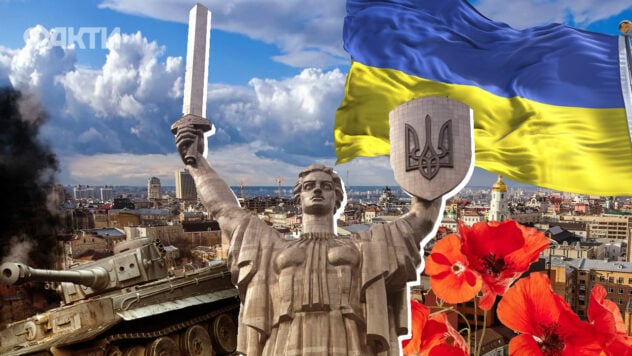
Wednesday, November 6, marks 81 years since Kyiv was liberated from the Nazi occupiers. The battles for the city were among the fiercest and bloodiest in the history of World War II.
In total, the operation during which the capital of Ukraine was liberated lasted three months. Hundreds of thousands of soldiers died directly in the battles to expel the Nazi occupiers from the city.
History repeated itself in February-March 2022, when the Ukrainian military, at the cost of incredible courage, managed to hold back the advance of thousands of Russian troops on the capital of Ukraine.
Now watching
On the 81st anniversary of Kyiv's liberation from the Nazis, ICTV Facts tell how the liberation operation took place and what preceded it.
Where it all began?
On August 23, 1939, the Non-Aggression Pact between the Third Reich and the Soviet Union (the so-called Molotov-Ribbentrop Pact) was signed in Moscow. According to this agreement, the parties pledged to refrain from attacking each other.
In a secret appendix to the document, the signatories divided spheres of influence in Eastern Europe. The USSR's sphere of interest included Estonia, Latvia, Finland, Bessarabia, and the eastern part of Poland. Nazi Germany laid claim to Lithuania, as well as Poland.
In fact, it was an agreement between two dictators – Adolf Hitler and Joseph Stalin, between the Nazi and communist regimes.
This agreement became a prologue to the outbreak of World War II of 1939-1945 and opened the way to military aggression against Poland.
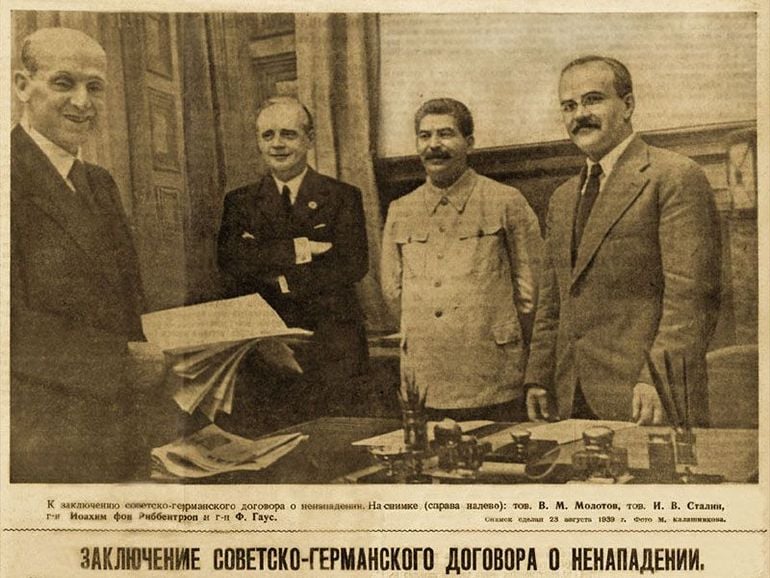
Signing of the Molotov-Ribbentrop Pact. Photo: istpravda.com.ua
Just a week after the signing of the Molotov-Ribbentrop Pact, On September 1, 1939, Germany invaded Poland. And on September 17th of the same year, Soviet troops entered Poland.
For Ukraine, World War II began on September 1st, 1939, when the Luftwaffe (the Third Reich's air force) bombed Lviv. At that time, the western territories of Ukraine, including Lviv, were under Polish control.
June 22nd, 1941, despite the non-aggression pact, the troops of the Third Reich invaded the territory of yesterday's ally – the USSR. As a result, the territory of Ukraine became the arena of brutal military actions. By the end of 1941 most of our country was occupied by Nazi troops.
The capture of Kyiv and the months-long Nazi occupation
The battles for Kyiv in 1941 lasted from the beginning of July to September 19. The attempt to capture the city on the move was thwarted by the staunch defense of the Soviet troops, in particular the garrison of the Kyiv fortified region.
The Nazi attacks were also repelled thanks to the active participation of thousands of Kiev residents in strengthening the defensive lines. The factories produced military equipment and ammunition.
In total, the defense of Kyiv lasted more than 70 days. September 19, 1941, when the Nazis closed the encirclement ring to the east of the city, the last units of Soviet troops left Kyiv.
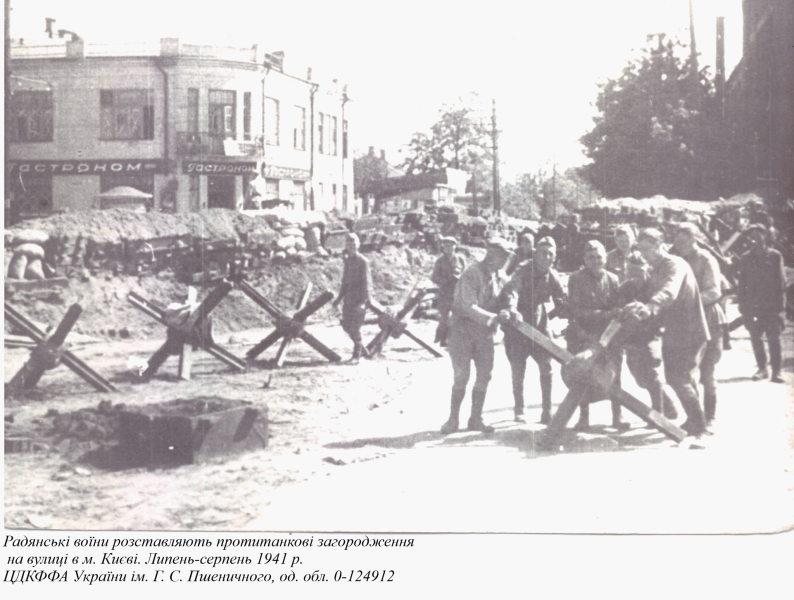
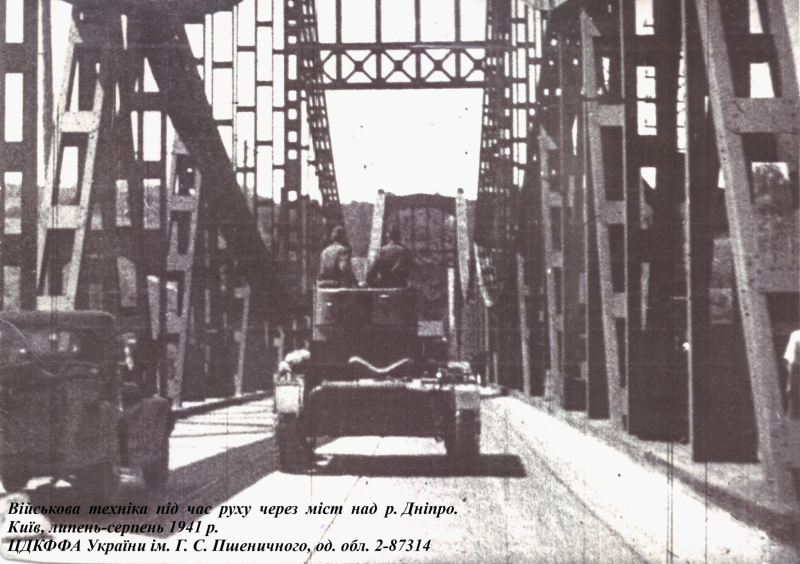
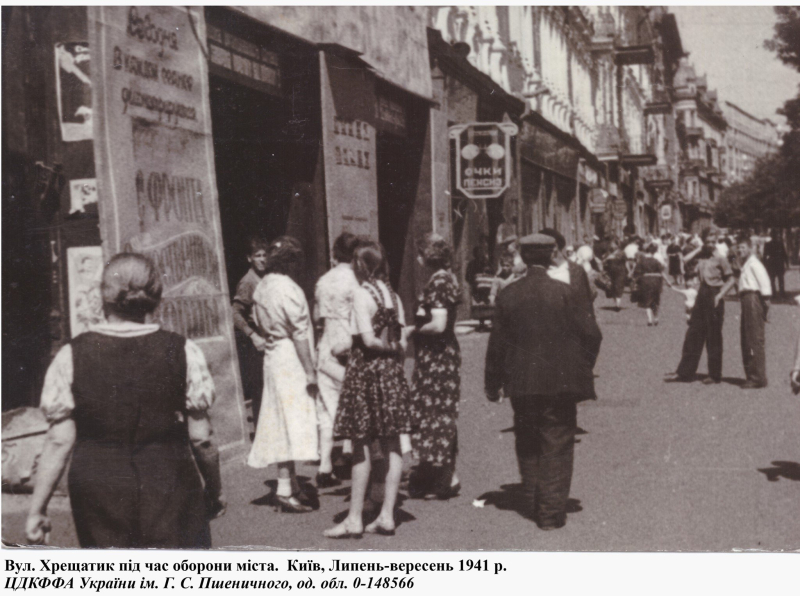
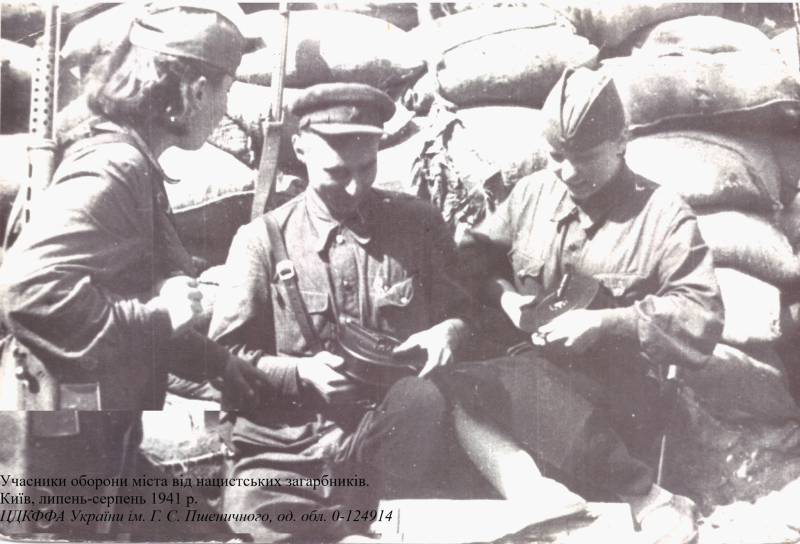
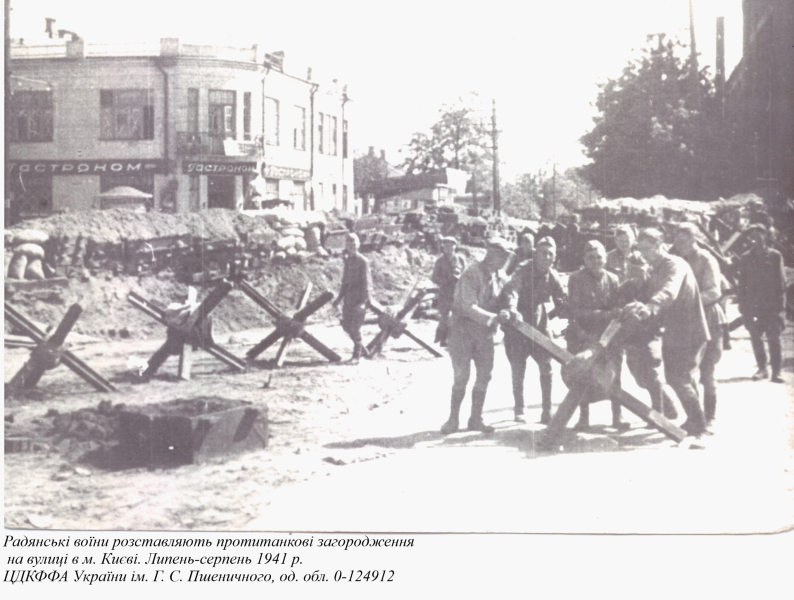
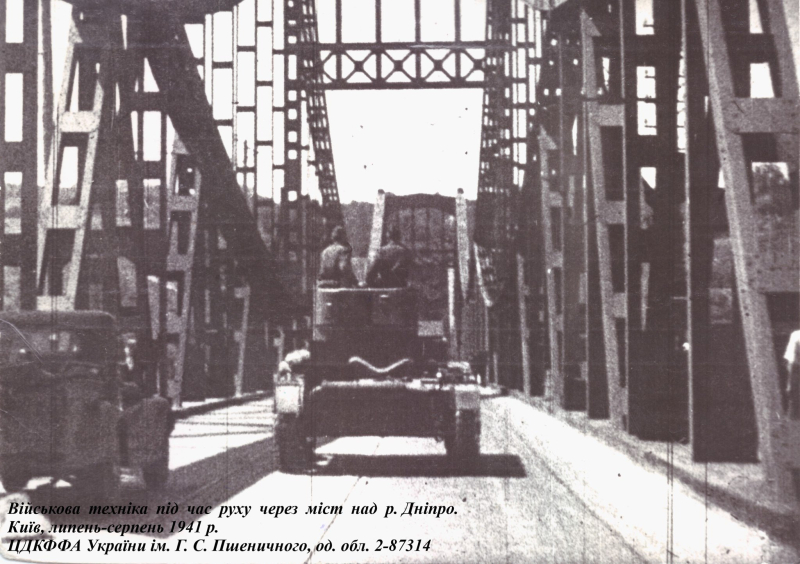
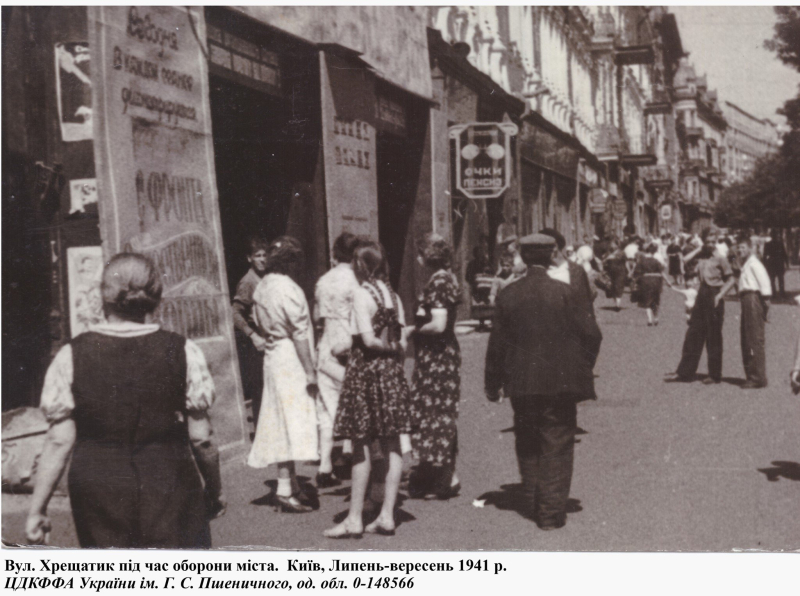
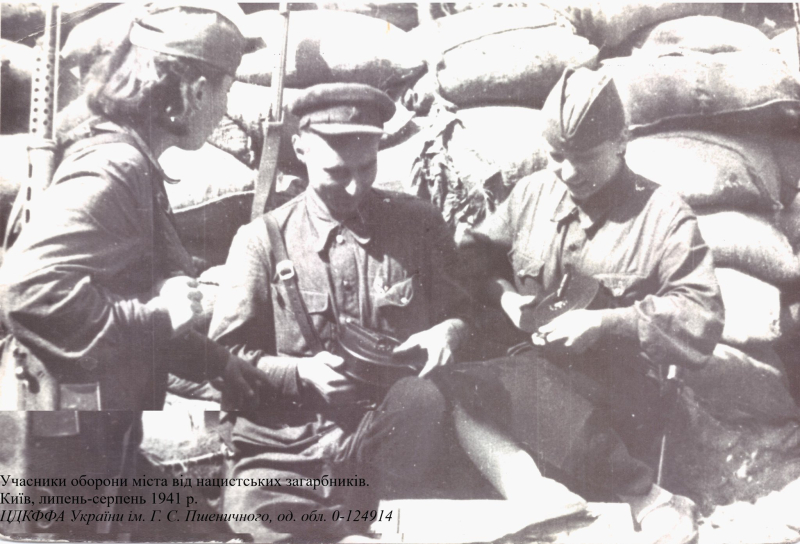
During the Kyiv defensive operation, the commander of the Southwestern Front, Colonel General Mikhail Kirponos, was killed. In total, more than 600 thousand fighters were surrounded, and only a few managed to escape.
On September 19, 1941, the Nazi occupation of Kyiv began, which lasted 778 days.
During the military actions, the city lost dozens of ancient buildings, Khreshchatyk, bridges and the Assumption Cathedral in the Kiev-Pechersk Lavra were blown up.
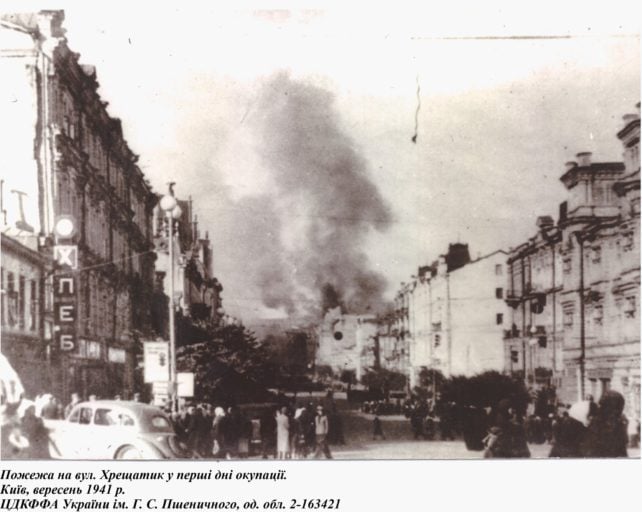
Fire on Khreshchatyk in the first days of the Nazi occupation. Photo: G.S. Pshenichny Central State Film, Photo and Phonography Archive of Ukraine
Counteroffensive and mobilization of the “Chernosvitniks”
In 1943 the troops of the anti-Hitler coalition began to liberate the territories occupied by the Nazis.
Since the second half of 1943 Ukraine again became the main theater of fierce battles.
In October 1943, based on the military units that were on the territory of our country, four Ukrainian fronts were formed, which were staffed primarily by Ukrainians.
Total mobilization of the civilian male population was carried out by the Soviet command as troops advanced across the territory of Ukraine. For this purpose, field military registration and enlistment offices were created.
According to the Ukrainian Institute of National Remembrance (UINP), from February 1943 to October 1944 alone, about 3.7 million people were mobilized on the territory of our country (among them were even teenagers aged 16-17).
As noted by the Ukrainian Institute of National Remembrance, everyone who ended up on the territory occupied by the Nazis was regarded by the totalitarian communist regime as potential traitors.
In connection with this, hastily mobilized Ukrainians were thrown into battle even without training, often without weapons and in civilian clothes. Such fighters were called “chernosvitniki” (or “black infantry”).
According to the UINP, about 250-270 thousand “black infantry” died during the liberation of Kyiv.
Fierce battles and the liberation of Kyiv on November 6, 1943
In mid-August 1943were ordered to defeat the Nazi troops on the Left Bank of Ukraine, reach the Dnieper and take bridgeheads. This was supposed to create the preconditions for the subsequent reconquest of Right Bank Ukraine.
In September 1943 Soviet troops reached the Dnieper. They received orders from Joseph Stalin to reconquer Kyiv at any cost before November 7 – the anniversary of the October Revolution (the so-called October Revolution). This date had a special symbolic meaning for the communist regime.
The Kiev offensive operation lasted from November 3 to 13, 1943 and was carried out by the troops of the 1st Ukrainian Front.
These military actions were part of the so-called Battle of the Dnieper– a series of interconnected offensive military operations of the Soviet troops against the army of the Third Reich. The operation, symbolically called the Battle of the Dnieper, involved the Belarusian front and four Ukrainian fronts. According to the Institute of History of the National Academy of Sciences of Ukraine, the troops of these fronts numbered more than 2.6 million people, more than 51 thousand guns and mortars, about 2,400 tanks and self-propelled artillery units, and more than 2,800 aircraft.
In general, the Battle for the Dnieper lasted from August to December 1943 and was one of the largest and bloodiest operations.
At the first stage, in August-September 1943, Soviet troops reached the Dnieper and captured bridgeheads on the right bank of the river. During the offensive in the direction of Kyiv, the Bukrin bridgehead was formed near the village. Bolshoy Bukrin (now Kiev region), where the fiercest battles took place.

Crossing at the Bukrin bridgehead. Photo: National Museum-Reserve The Battle of Kyiv in 1943
It was planned to launch an offensive on Kyiv from the south – the Bukrin bridgehead, but this idea had to be abandoned due to the defense of the Nazi troops, who had entrenched themselves on the high slopes of the Dnieper.
And therefore the Kyiv offensive operation was carried out from the north – from the Lyutezh bridgehead (located near the village of Lyutezh in the Kyiv region).
Before the liberation of Kyiv, the 1st Ukrainian Front numbered 50 divisions, about seven thousand guns and mortars, more than 670 tanks and about 700 aircraft. The Nazis had 33 divisions, up to 400 tanks and over 660 aircraft.
As part of the Kyiv offensive operation, Soviet troops were secretly transferred from the village of Bolshoy Bukrin to the area of the village of Lyutezh in a few days (we are talking, in particular, about the Third Guards Tank Army).
To do this, the soldiers had to perform complex march maneuvers and force the Dnieper (cross the river and take certain bridgeheads through battle). The troops had to perform these tasks without the proper crossing equipment and without air cover (due to weather conditions). At first, the crossing was carried out without heavy equipment.
– The Supreme Command Headquarters decided to force the Dnieper quickly and immediately. The river turned red with blood in those days. The soldiers, under enemy fire, crossed to the right bank using whatever they could: landing and fishing boats, rafts, logs, barrels, and even raincoats filled with hay, Svetlana Demchenko, a senior researcher at the National Museum of the History of Ukraine in World War II, told the publication Golos Ukrainy.

Bridgeheads near Kyiv. Photo: istpravda.com.ua
Realizing that the fate of the war was being decided on the banks of the Dnieper, the Nazis created a powerful system of fortifications. This strategic defensive line was called the Eastern Wall.
The occupiers divided Kyiv itself into three sectors and built strongholds. In preparation for street fighting, the Nazi command gave the order to resettle Kiev residents outside the city limits back in late September.
On November 1, 1943 Soviet troops carried out a diversionary maneuver: they launched an offensive from the Bukrin bridgehead in the direction of Kyiv. And already on the morning of November 3, with the support of aviation, a strike group of troops of the 1st Ukrainian Front launched an offensive from the Lyutezh bridgehead (north of Kyiv).
The offensive was preceded by powerful artillery fire on enemy positions, which lasted about 40 minutes. The artillery was deployed with an unprecedented density: more than 300 units per 1 km.
This powerful blow inflicted crushing losses on the Nazis, destroying their defenses and military equipment.
The decisive blow to the Nazi troops was delivered by the 38th Army under the command of a native of the Donetsk region, Colonel General Kirill Moskalenko. The 3rd Guards Tank Army and the 7th Artillery Breakthrough Corps also took part in the Kyiv offensive operation.
According to historians, the tanks went into battle under the loud roar of sirens. And in front, a regiment of minesweeper tanks was deployed to clear minefields.
Under such pressure and fearing encirclement, the Nazis began to hastily withdraw their troops from Kyiv. And for cover, they threw reserve divisions into the battle.

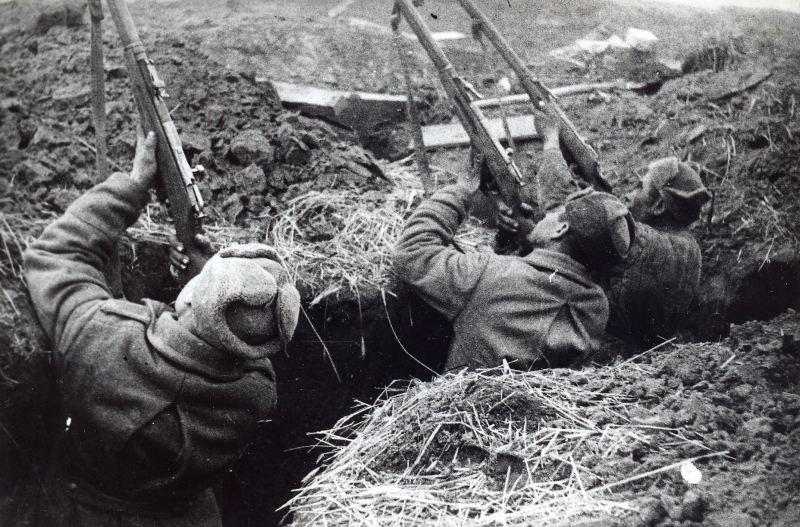
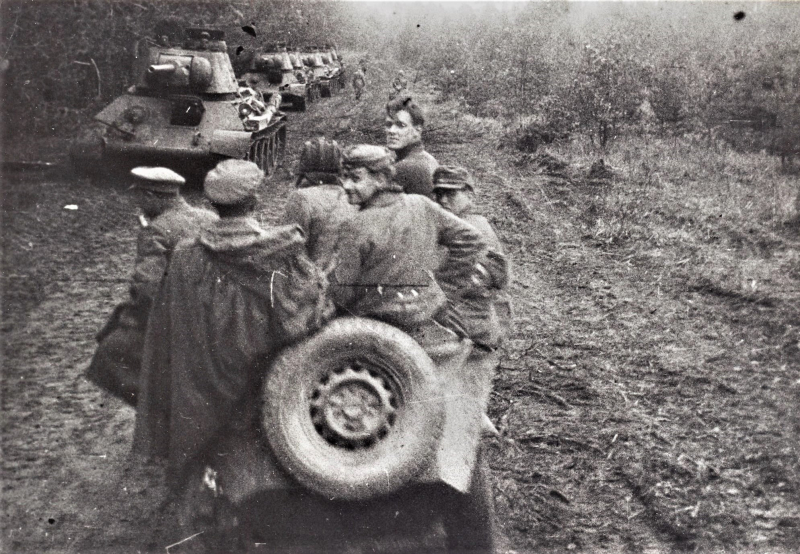
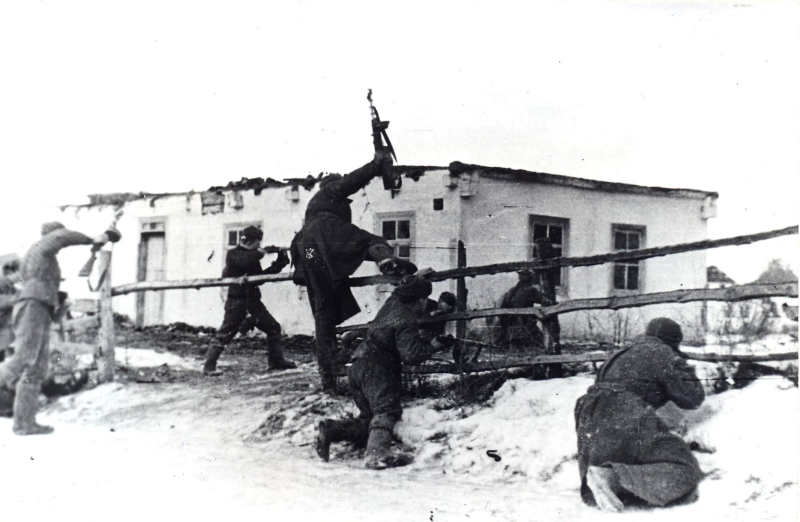
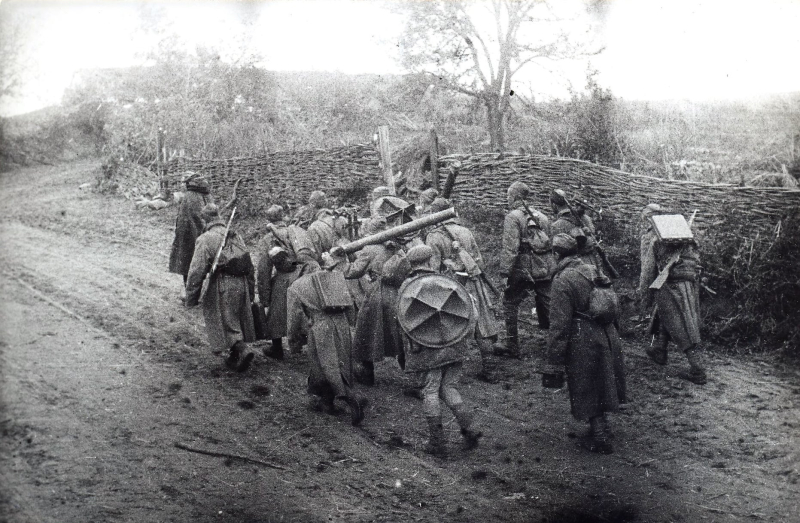
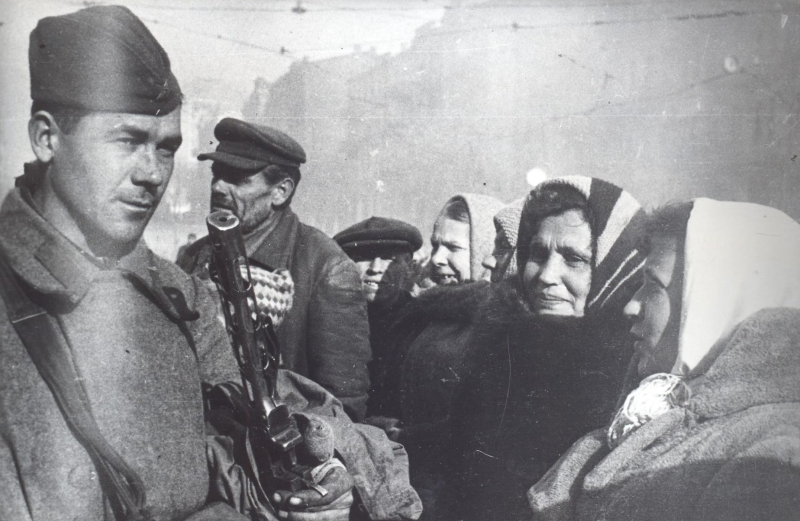

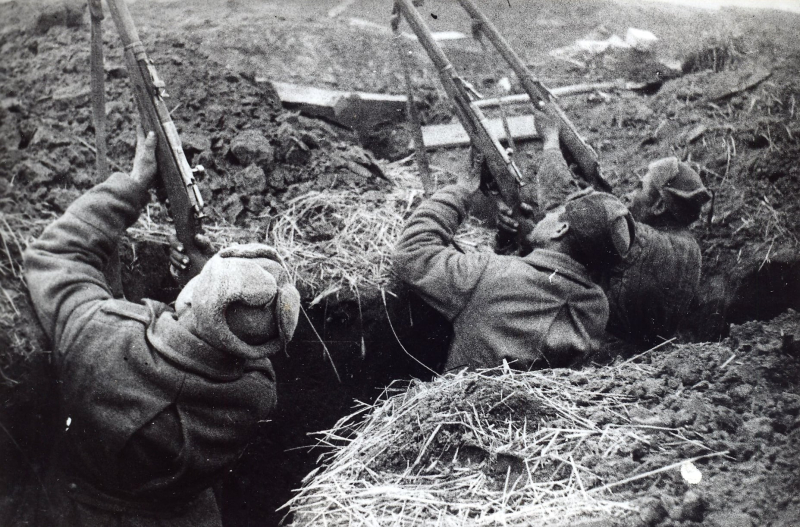
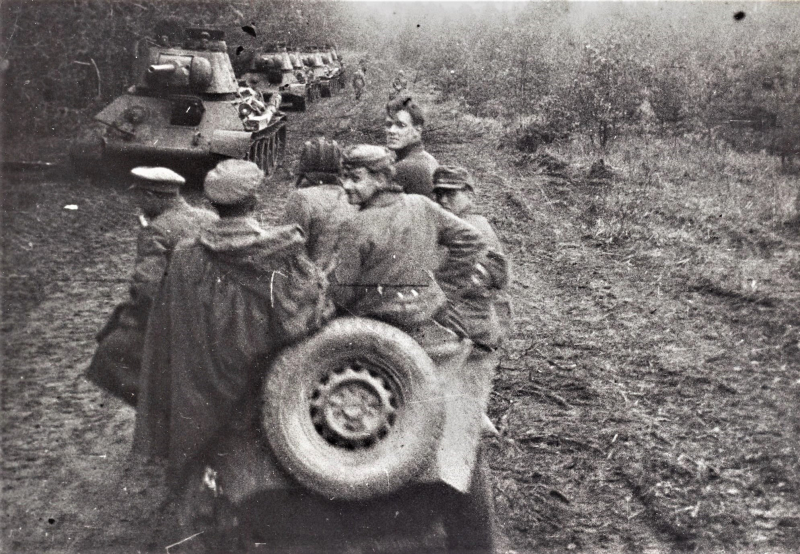
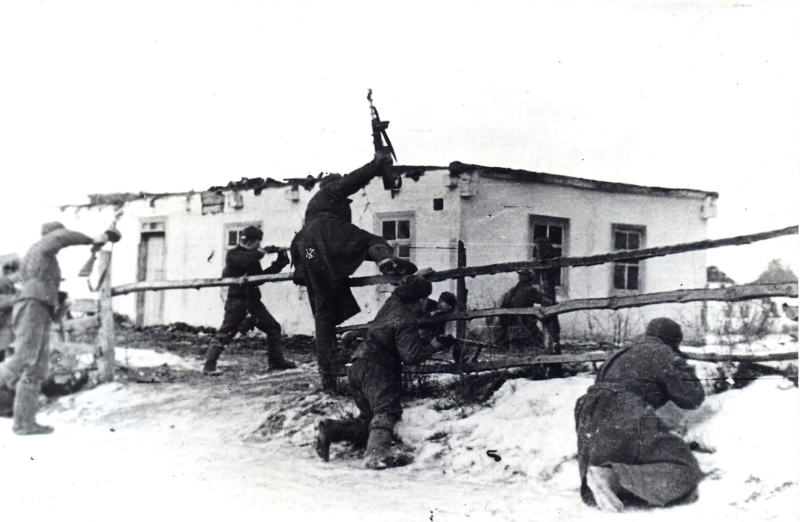
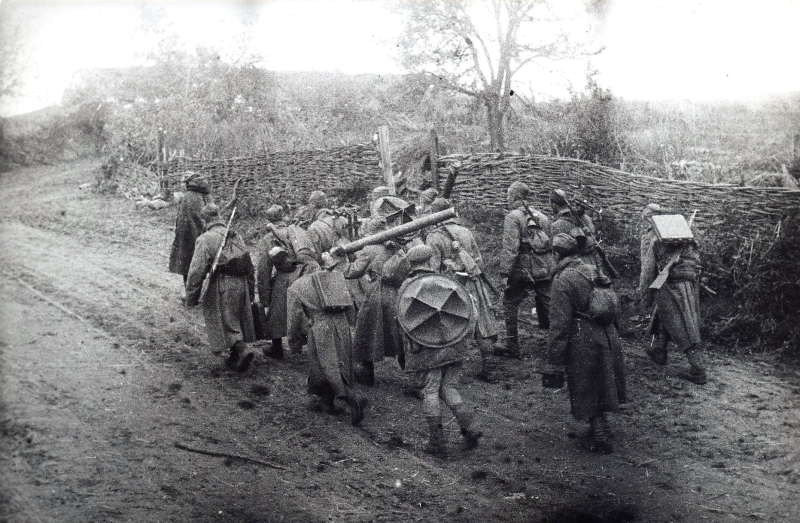
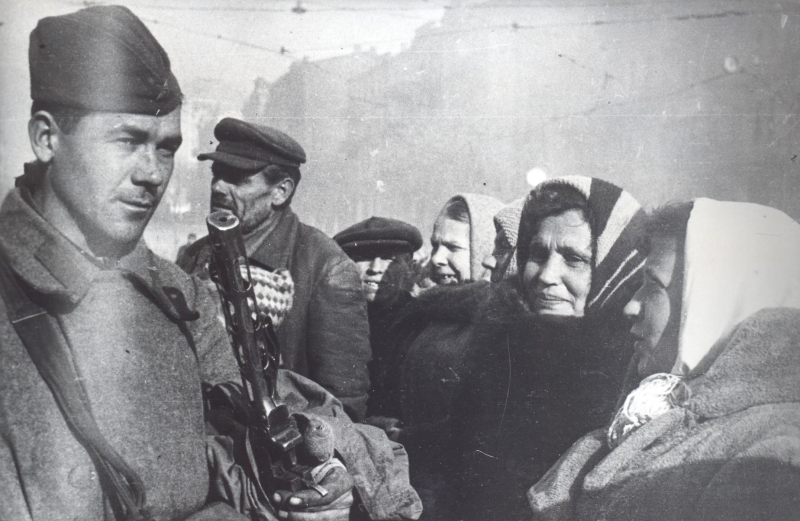
The decisive battle for Kyiv took place on the night of November 5-6 1943, especially in the area of Borshahivka and Syrets. Soviet troops broke through the enemy defenses from Podol, Svyatoshino and Solomenka and made their way to the city center.
As of 04:00 am on November 6, 1943 the enemy's resistance was finally overcome, and Kyiv was liberated from the Nazi occupiers.
At that time, the city was destroyed and almost empty. In the center of the capital of Ukraine there were charred ruins, because, retreating, the Nazis set fire to everything they could.
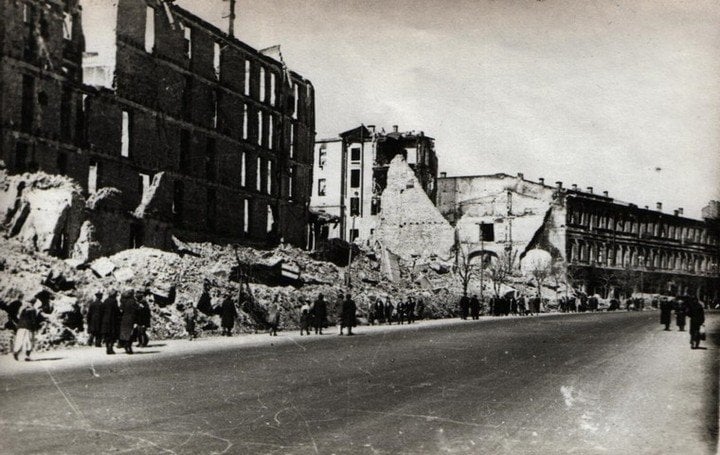
Destroyed Khreshchatyk. Photo: State Archival Service of Ukraine
Later, the Nazis were driven out of Fastov, an important railway junction.
Losses in the thousands
As noted by the Institute of History of Ukraine, during the crossing of the Dnieper and the liberation of Kyiv about 417 thousand soldiers and officers of the Soviet army died.
The Ukrainian Institute of National Memory cites the same data. In order to recapture the capital of Ukraine before November 7, the Soviet command did not take into account the losses and threw all possible forces into battle.
The total human losses of Ukraine in World War II (from 1939 to 1945) are estimated at 8-10 million people. Of these, up to 4 million people are military personnel, and more than 5 million are civilians (1.5 million are Holocaust victims).
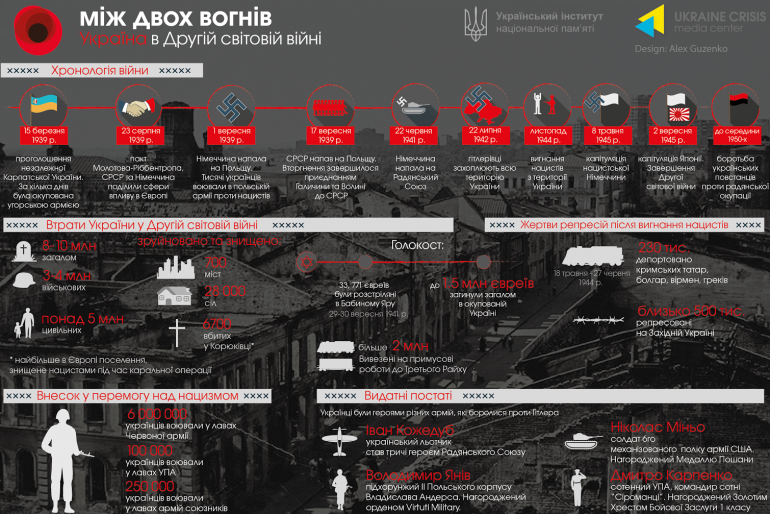
Total more than 6 million Ukrainians fought in the Soviet troops against the Nazi occupiers. Another 100 thousand were in the ranks of the UPA. Thousands of Ukrainians also fought against the Nazis in the ranks of the partisans. And about 250 thousand fought in the armies of the allied countries.
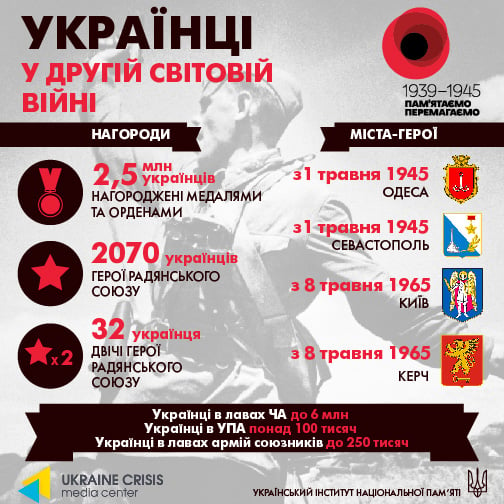
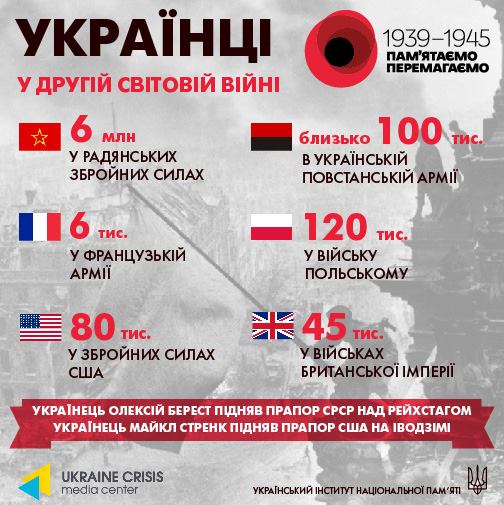

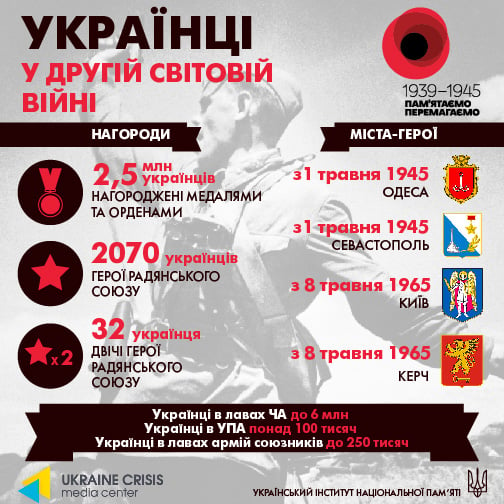
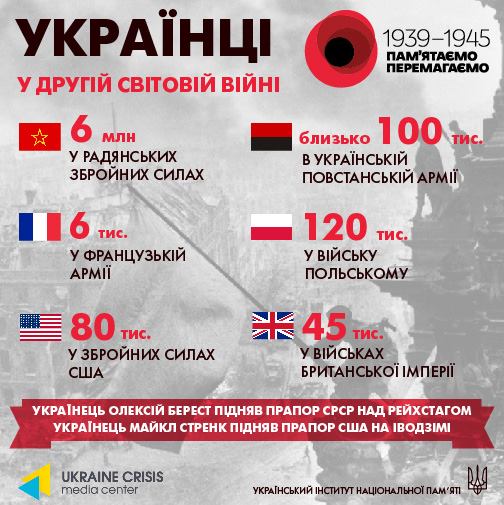
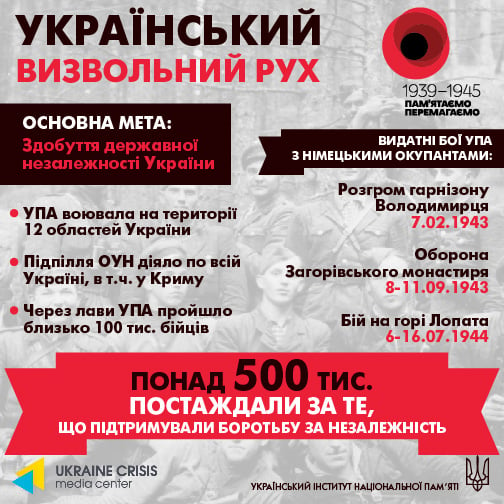
More than two thousand Ukrainians were awarded the title Hero of the Soviet Union for their heroism (this was the highest award in the USSR). In total, about 2.5 million Ukrainians were awarded medals and orders.
Russian invasion and a new battle for Kyiv
Ukrainians had to defend Kyiv again in 2022, now from thousands of Russian troops.
So, On February 24,Russian dictator Vladimir Putin declared war on Ukraine, which he dubbed a “special military operation”.
A large-scale invasion of Russian troops began at about 04:00 in the morning, not only from Russian territory, but also from Belarus and temporarily occupied Crimea. The invaders attacked Ukrainian border outposts and military infrastructure facilities.
Martial law and general mobilization have been introduced in Ukraine since February 24.
In the first days of the full-scale war, units of the Russian army captured the Chernobyl Nuclear Power Plant and part of the Kyiv region. In the occupied settlements (such as Bucha, Irpen, Moshchun, Motyzhin and many others) they carried out real terror and atrocities, torturing and killing peaceful Ukrainians.
During the assault on the airfield in Gostomel, the occupiers destroyed the world's largest transport aircraft, the An-225 Mriya.
The Kremlin expected to capture Kyiv in three days at most. However, thanks to the skillfully thought-out defense of the capital and the courage of the Ukrainian military, Russian troops were unable to do this.
At the end of March information appeared that the Russians were withdrawing units from the territory of the Kyiv region. And on April 2 the Ministry of Defense of Ukraine officially confirmed that the entire territory of the region had been liberated from Russian occupation troops.
The victory of the Ukrainian Defense Forces in the battle for Kyiv was one of the most significant achievements of Ukraine in the full-scale war.

